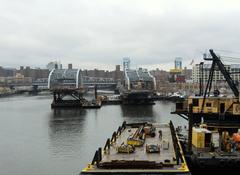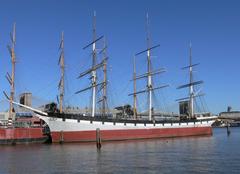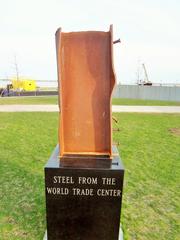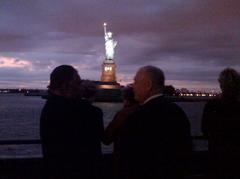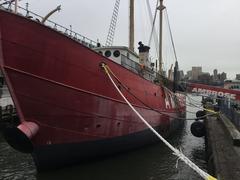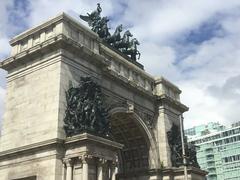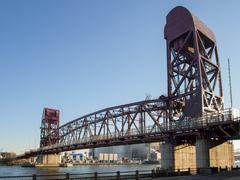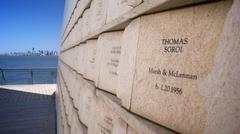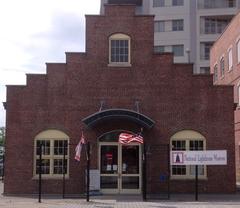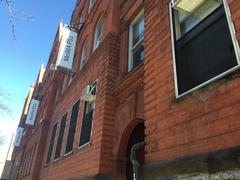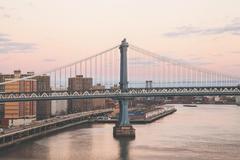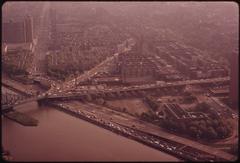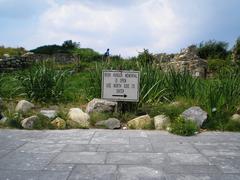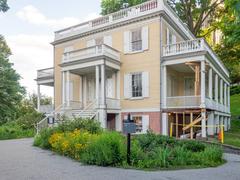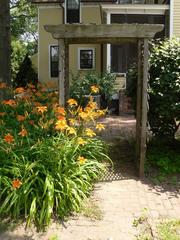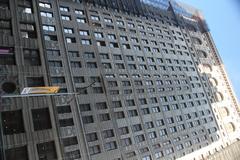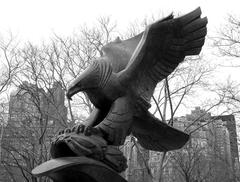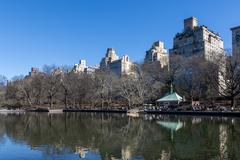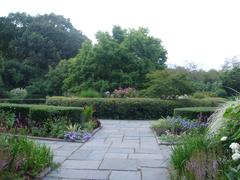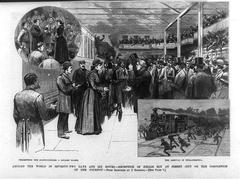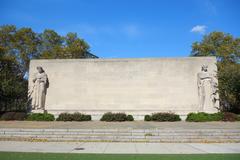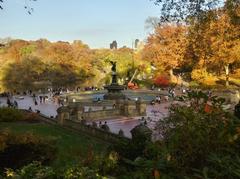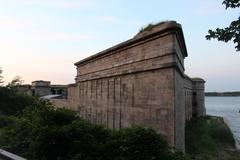Comprehensive Guide to Visiting Kosciuszko Bridge in New York City
Published Date: 24/07/2024
Introduction to Kosciuszko Bridge
The Kosciuszko Bridge is an iconic landmark in New York City that seamlessly blends historical significance with modern engineering marvels. Originally constructed in the early 20th century as the Meeker Avenue Bridge, it was intended to alleviate the traffic bottlenecks caused by the outdated Penny Bridge. Officially opened on August 23, 1939, and later renamed to honor General Thaddeus Kosciuszko, a Polish military leader who played a vital role in the American Revolutionary War, the bridge stands as a testament to the enduring ties between the U.S. and Poland (Historic Bridges, Polish American Cultural Center).
Over the decades, the Kosciuszko Bridge has undergone several modifications to keep up with the increasing traffic demands and deteriorating conditions. From its original truss design to the modern cable-stayed structure, the bridge has been a crucial link between the boroughs of Brooklyn and Queens, facilitating economic growth and urban development. The latest reconstruction project, completed in 2020, not only improved traffic flow but also introduced a 7-acre park named “Under the K,” adding a recreational space to this bustling urban area (Wikipedia).
This guide aims to provide a comprehensive overview of the Kosciuszko Bridge, delving into its rich history, architectural significance, and practical visitor information. From visiting hours and travel tips to nearby attractions and special events, this guide is designed to help you make the most of your visit to this remarkable structure.
Table of Contents
- Introduction
- Historical Background
- Visitor Information - Kosciuszko Bridge
- Frequently Asked Questions
- Conclusion and Call to Action
Historical Background
Origins and Early History
The Kosciuszko Bridge, originally known as the Meeker Avenue Bridge, has a rich history that dates back to the early 20th century. The bridge was constructed to replace the Penny Bridge, which had become inadequate by the mid-1920s due to increasing commercial and industrial activities in the area. The Penny Bridge caused significant traffic bottlenecks and delays, particularly because it had to allow for waterway traffic to pass, which often led to vehicular traffic jams (Historic Bridges).
Naming and Dedication
The Meeker Avenue Bridge was officially opened on August 23, 1939, and was later renamed the Kosciuszko Bridge in honor of General Thaddeus Kosciuszko, a Polish military leader who played a significant role in the American Revolutionary War. Kosciuszko was a native of Poland and had a distinguished career in engineering and military strategy. He was responsible for the fortification of key locations such as the Philadelphia waterfront, the Hudson River, and West Point, New York (Polish American Cultural Center).
Design and Construction
The original Kosciuszko Bridge was a truss bridge that spanned Newtown Creek, connecting Greenpoint in Brooklyn to Maspeth in Queens. The bridge was designed to be high enough to allow cargo ships and other vessels to pass underneath, which was crucial given the extensive maritime traffic on Newtown Creek. The design and construction were overseen by the City of New York’s Department of Plant and Structure/Department of Public Works (National Park Service).
Mid-20th Century Modifications
In 1958, a repaving project temporarily made the bridge a one-way operation for five months to facilitate the work. Only Queens-bound traffic was allowed during afternoons and evenings, while Brooklyn-bound traffic was permitted at all other times. In 1965, the bridge was widened, and the approach ramps on the Brooklyn–Queens Expressway (BQE) and Long Island Expressway (LIE) were rebuilt into an incomplete partial cloverleaf interchange. This project, which cost $32.7 million, also involved the removal of the original bridge’s sidewalks to make way for a widened roadway (Wikipedia).
Deterioration and Replacement
By the 1990s, the old bridge was deteriorating and heavily congested, unable to handle the increasing interstate traffic. After an 18-month study in 1994–1995, State Transportation Department officials concluded that a new bridge was necessary to relieve congestion. A new $100 million bridge, which included an additional three lanes, was proposed to be built next to the original six-lane Kosciuszko Bridge. This new bridge was part of a larger renovation project aimed at improving the entire crossing (Wikipedia).
Construction of the New Bridge
On May 23, 2014, a $554.77 million design-build contract was awarded for the construction of the new eastbound span and the demolition of the old bridge. The contract was awarded to a team consisting of Skanska, Ecco III of Yonkers, Kiewit Corporation of Nebraska, and HNTB of Kansas as the lead design firm. This project was the largest single contract ever awarded by the New York State Department of Transportation. The new eastbound viaduct was completed in 2017, and the westbound viaduct was completed by 2020 (Wikipedia).
Modern Era and Current Structure
The new Kosciuszko Bridge consists of a pair of cable-stayed bridge spans. The eastbound span opened in April 2017, while the westbound span opened in August 2019. The new bridge was designed to reduce traffic delays by up to 65% during rush hours. The construction of the westbound span also included the development of a 7-acre park named “Under the K,” which features a pathway, multi-use zones, a performance space, and a waterfront seating area (Wikipedia).
Cultural and Historical Significance
The Kosciuszko Bridge is not just a piece of infrastructure; it is a symbol of the changing face of Brooklyn and Queens. The bridge has witnessed the transformation of the surrounding neighborhoods and has played a crucial role in the economic development of the area. The bridge’s historical significance is further highlighted by its dedication to General Thaddeus Kosciuszko, a figure who symbolizes the strong ties between Poland and the United States (Brooklyn Library).
Legacy and Preservation
Despite the demolition of the original truss bridge, efforts have been made to preserve the legacy of the Kosciuszko Bridge. In 2022, a set of plaques dedicated to Tadeusz Kościuszko were installed on the new bridge. These plaques serve as a reminder of the bridge’s historical significance and its namesake’s contributions to American history (Wikipedia).
Visitor Information - Kosciuszko Bridge
Visiting Hours and Tickets
The Kosciuszko Bridge itself does not require a ticket to visit. However, if you want to explore the “Under the K” park, it is open from dawn to dusk. There are no ticket fees for general access, but special events may require advanced booking and fees. Be sure to check the official NYC Parks website for the latest information.
Travel Tips and Nearby Attractions
When visiting the Kosciuszko Bridge, consider taking public transportation to avoid traffic congestion. The bridge is accessible via several bus routes and the subway. Nearby attractions include the Greenpoint Historic District, McCarren Park, and the Brooklyn Brewery, all of which offer unique experiences and are within a short distance from the bridge.
Special Events and Guided Tours
Throughout the year, various events and guided tours are available at the Kosciuszko Bridge and the surrounding areas. These may include historical tours, photography walks, and community events. Check local listings and the NYC Department of Transportation’s website for up-to-date information on special events.
Frequently Asked Questions
What are the best times to visit the Kosciuszko Bridge?
Early mornings and late afternoons are ideal for visiting to avoid traffic and enjoy the scenic views.
Are there guided tours available?
Yes, guided tours are often organized by local historical societies and tour operators. Check online for schedules and availability.
Is the “Under the K” park family-friendly?
Absolutely, the park is designed for visitors of all ages and includes multi-use zones, performance spaces, and seating areas.
Can I take photographs at the Kosciuszko Bridge?
Yes, the bridge and its surrounding areas offer excellent photographic opportunities, especially during sunset.
Conclusion and Call to Action
The Kosciuszko Bridge stands as a testament to New York City’s engineering prowess and historical significance. From its origins as the Meeker Avenue Bridge to its modern incarnation as a cable-stayed bridge, it plays a vital role in the city’s infrastructure. Don’t miss the chance to visit this iconic landmark and explore its rich history. For more updates, follow us on social media and check out our other posts on New York’s historical sites.
Summary and Key Points
The Kosciuszko Bridge stands as a symbol of New York City’s resilience and adaptability, bridging not just the gap between Brooklyn and Queens but also connecting the past with the present. From its origins as a truss bridge to its modern-day cable-stayed design, the bridge has continually evolved to meet the needs of the city and its residents. The dedication to General Thaddeus Kosciuszko underscores the bridge’s historical and cultural significance, serving as a reminder of the strong ties between the United States and Poland (Brooklyn Library, Bowery Boys History).
Today’s Kosciuszko Bridge is more than just a transportation link; it’s a destination in its own right, offering unique experiences such as the “Under the K” park and various vantage points for scenic views and photography. With its modern amenities and historical plaques honoring Tadeusz Kościuszko, the bridge is a must-visit for both locals and tourists. Whether you’re interested in its rich history, architectural beauty, or simply looking for a new spot to explore in New York City, the Kosciuszko Bridge offers something for everyone.
As you plan your visit, be sure to check out local events, guided tours, and nearby attractions to make the most of your experience. For more updates and detailed information, follow us on social media and explore our other posts on New York’s historical sites. The Kosciuszko Bridge is not just a piece of infrastructure; it’s a living monument to the city’s vibrant past and dynamic future.
